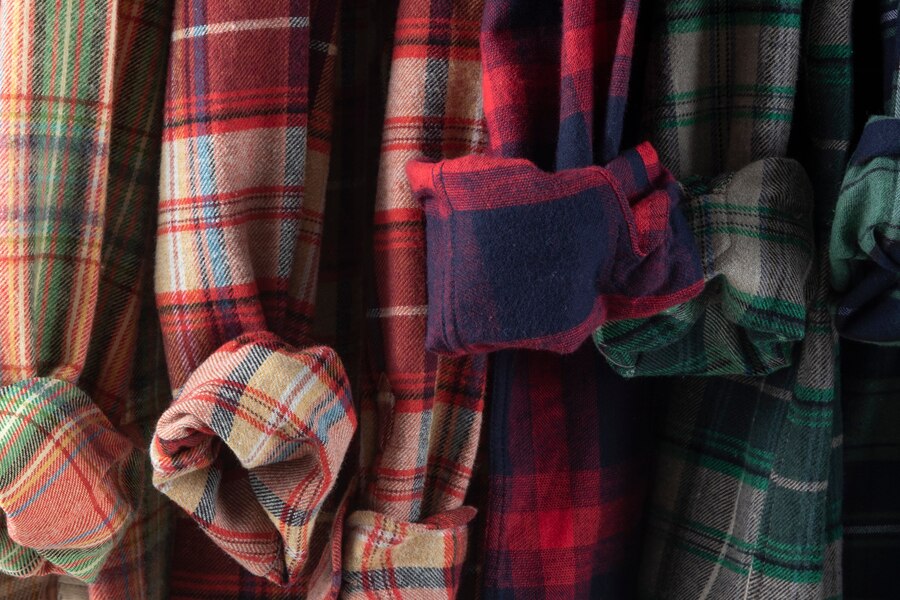The humble handkerchief, a small square of cloth, has been a constant companion to humanity for centuries. Often overlooked in modern times, this versatile item has played numerous roles in daily life, from a practical tool to a symbol of elegance and sentimentality. Let’s dive into the rich history, diverse uses, and cultural significance of the handkerchief.
The History of the Handkerchief
The handkerchief’s roots can be traced back to ancient civilizations. Early examples have been found in ancient Rome, Greece, and China, where they were often used by the elite for hygienic purposes. In Rome, for instance, handkerchiefs were known as “sudarium,” meaning sweat cloth, and were used to wipe perspiration from the face and hands.
Evolution Through the Middle Ages
During the Middle Ages, handkerchiefs began to appear in European courts, often made from luxurious materials like silk and finely embroidered. They became symbols of nobility and refinement. By the 16th century, they were an essential part of a nobleman’s attire, often intricately decorated and perfumed.
Handkerchiefs in the Modern Era
The Industrial Revolution brought about the mass production of handkerchiefs, making them accessible to the general public. By the 19th century, they were ubiquitous in both men’s and women’s fashion. The 20th century saw the handkerchief’s role expand beyond practicality to a significant cultural icon.
Handkerchiefs in Western Cultures
In Western cultures, handkerchiefs have been used as tokens of affection, symbols of status, and even in romantic gestures. The tradition of dropping a handkerchief to attract someone’s attention is a classic trope in literature and film.
Symbolism in Eastern Traditions
In Eastern traditions, handkerchiefs hold deep symbolic meanings. In Japan, for instance, they are often used in rituals and ceremonies. In many Asian cultures, they are given as gifts to convey respect and goodwill.
Handkerchiefs in Art and Literature
Handkerchiefs have appeared in countless works of art and literature. Shakespeare famously used a handkerchief as a pivotal plot device in “Othello,” symbolizing love, jealousy, and betrayal.
Common Fabrics Used
Handkerchiefs are made from a variety of fabrics, each offering different benefits. Cotton is the most common due to its softness and absorbency. Linen, silk, and synthetic materials are also popular choices, each lending a different texture and appearance.
Popular Designs and Patterns
From simple white squares to elaborate embroidered patterns, handkerchiefs come in countless designs. Floral prints, monograms, and lace edges are just a few of the styles that have been popular over the years.
Handmade vs. Machine-made
Handmade handkerchiefs are often prized for their craftsmanship and unique designs. Machine-made ones, on the other hand, are more widely available and affordable, catering to everyday use.
Everyday Handkerchiefs
These are the most common type, used for practical purposes like wiping one’s face or hands. They are usually made from durable fabrics like cotton.
Decorative and Ceremonial Handkerchiefs
These handkerchiefs are often made from luxurious materials and feature intricate designs. They are used in formal settings, such as weddings and religious ceremonies.
Specialty Handkerchiefs
Handkerchiefs designed for specific purposes, like mourning handkerchiefs (often black or dark-colored) or wedding handkerchiefs (usually white and intricately decorated), fall into this category.
Personal Hygiene
One of the primary uses of a handkerchief is for personal hygiene, such as blowing one’s nose or wiping sweat. Unlike disposable tissues, they can be washed and reused, making them more sustainable.
Fashion Accessory
Handkerchiefs have long been used as fashion accessories. A brightly colored or patterned handkerchief in a breast pocket can add a touch of elegance to any outfit.
Emergency Uses
Handkerchiefs are incredibly versatile in emergencies. They can be used as makeshift bandages, tourniquets, or even to filter water in survival situations.
Sustainability Compared to Disposable Tissues
Using handkerchiefs reduces waste compared to disposable tissues. They are washable and reusable, making them an eco-friendly option.
Reusability and Eco-friendliness
Handkerchiefs can be used hundreds of times before they need to be replaced, significantly cutting down on waste and the resources needed to produce disposable alternatives.
Proper Use and Maintenance
To maintain a handkerchief, it’s important to wash it regularly, preferably by hand or in a gentle machine cycle. Proper folding and storage can keep it looking neat and tidy.
Gifting Handkerchiefs
Handkerchiefs make thoughtful gifts, often symbolizing care and consideration. In some cultures, they are given during significant life events or as a token of friendship.
Movies and TV Shows
Handkerchiefs have been featured in many iconic movie and TV moments. Think of the classic image of a woman waving a handkerchief to bid farewell in old films.
Iconic Moments Involving Handkerchiefs
From pivotal scenes in Shakespeare’s plays to dramatic moments in modern cinema, handkerchiefs have served as powerful symbols and plot devices.
Making Your Own Handkerchief
Creating your own handkerchief can be a fun and rewarding project. All you need is some fabric, scissors, and basic sewing skills.
Customizing with Embroidery
Adding personal touches like embroidery can make a handkerchief unique. Monograms, patterns, and even small images can be stitched onto the fabric.
Tips for Starting a Collection
Collecting handkerchiefs can be a delightful hobby. Start with pieces that have personal significance or unique designs and gradually expand your collection.
Famous Collectors and Collections
Some collectors have amassed impressive handkerchief collections, showcasing items from different eras and cultures. These collections can often be seen in museums or exhibitions.
Modern Adaptations
In the digital age, handkerchiefs have found new roles. Some companies offer handkerchiefs with antimicrobial properties, making them more hygienic for modern use.
The Future of Handkerchiefs
As sustainability becomes more important, the handkerchief’s role is likely to grow. Innovations in fabric technology may also lead to new types of handkerchiefs.
Hygiene Practices
While handkerchiefs are reusable, it’s crucial to wash them regularly to maintain hygiene. Using a fresh handkerchief each day can help prevent the spread of germs.
Comparisons with Other Personal Hygiene Products
Compared to disposable tissues, handkerchiefs are more environmentally friendly. However, they require more maintenance to ensure they remain sanitary.
Unique Uses in Different Cultures

Around the world, handkerchiefs have various unique uses. In some cultures, they are used in traditional dances, while in others, they serve as symbols of hospitality.
Global Variations in Design and Usage
Handkerchief designs and usages vary globally. Japanese tenugui, for example, are versatile cloths used not just as handkerchiefs but also as decorative items and functional tools.
Conclusion
The handkerchief is much more than a simple piece of cloth. It is a versatile, sustainable, and culturally rich item that has stood the test of time. Whether used for personal hygiene, as a fashion accessory, or as a symbol in art and culture, the handkerchief continues to be a valuable part of our lives.
FAQs
Why are handkerchiefs still relevant today?
Handkerchiefs remain relevant due to their sustainability, reusability, and cultural significance. They offer an eco-friendly alternative to disposable tissues.
How can I care for my handkerchiefs?
To care for handkerchiefs, wash them regularly, preferably by hand or on a gentle machine cycle. Proper storage and occasional ironing can keep them looking neat.
Are handkerchiefs sanitary?
Handkerchiefs can be sanitary if washed regularly and used properly. It’s advisable to use a fresh handkerchief each day to maintain hygiene.
Can handkerchiefs be used as a fashion statement?
Absolutely! Handkerchiefs can add a touch of elegance and personality to any outfit. They come in various designs, from simple to elaborate, making them versatile fashion accessories.
What are the best fabrics for handkerchiefs?
The best fabrics for handkerchiefs are cotton for everyday use due to its softness and absorbency, and silk or linen for decorative or ceremonial purposes.
